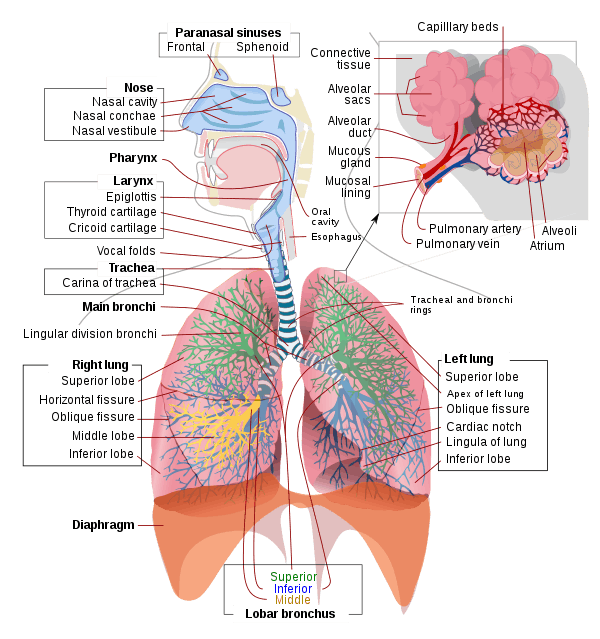The Respiratory system
Function of System:
Gas exchange especially getting oxygen into the body.
How it aids in homeostasis:
Gas exchange. Regulation of blood pH.

Name and function of Major Organs:
Nose - Main gateway of the respiratory system. Oral Cavity - Second main gateway of the respiratory system. Pharynx - Carries air to the lungs. Trachea - Main part of the body air way, providing air flow to and from the lungs. Lungs - Allows oxygen in the air to be taken into the body.
Comparative anatomy:

When comparing our respiratory system to that of a bird, there are some very distinct differences. The most notable of which is the fact that along with having lungs, birds also have air sacs, which extend into the humerus (the bone between the shoulder and elbow), the femur, the vertebrae and even the skull. Birds do not have a diaphragm, instead, they move air in and out of there respiratory system via pressure changes in the air sacs.
When compared to amphibians, we discover even sharper contrasts. As their young will generally undergo a metamorphosis from larva with gills, to an adult air breathing form with lungs. They also differ from us due to the fact that they use their skin as a secondary respiratory surface. interestingly enough, certain species of frogs and salamanders lack lungs all together and rely entirely on their skin.
The respiratory system of an insect is distinct due to the fact that it is a series of internal air tubes called the trachea. There is a main pair of lateral tracheae running the length of the body, one on each side. The tracheoles end within the body cells and gases are moved by diffusion within the tracheal system.
Return to Table of Contents